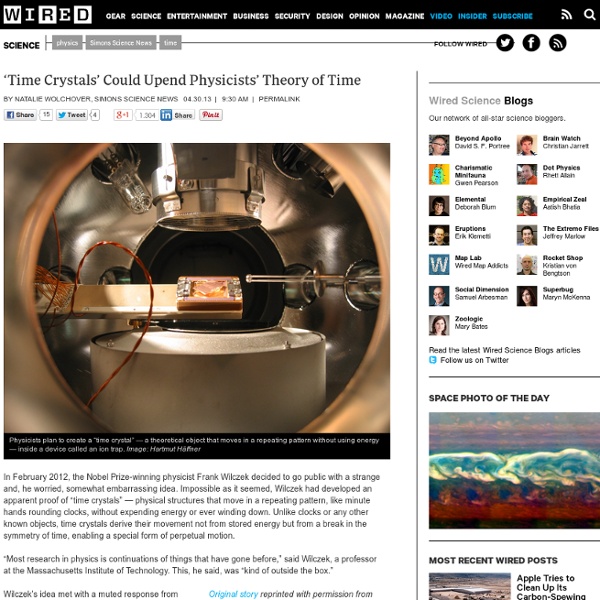quantum and relativity
Living Universe Foundation
Mediadesk - First glimpse into birth of the Milky Way
News release, August 25, 2011 For almost 20 years astrophysicists have been trying to recreate the formation of spiral galaxies such as our Milky Way realistically. Now astrophysicists from the University of Zurich present the world’s first realistic simulation of the formation of our home galaxy together with astronomers from the University of California at Santa Cruz. The new results were partly calculated on the computer of the Swiss National Supercomputing Center (CSCS) and show, for instance, that there have to be stars on the outer edge of the Milky Way. The aim of astrophysical simulations is to model reality in due consideration of the physical laws and processes. Astronomical sky observations and astrophysical simulations have to match up exactly. Removing standard matter central to formation of spiral galaxies For their study, the scientists developed a highly complex simulation in which a spiral galaxy similar to the Milky Way develops by itself without further intervention.
The Reality Tests
Phd student Simon Gröblacher sits behind the floating table where he spends evenings doing Schrödinger’s cat-style experiments. Photograph by Mark Mahaney. In the summer of 1925, Werner Heisenberg was stricken with hay fever and having trouble with math. He asked his advisor for two weeks off and left for a barren island in the North Sea. He spent his mornings swimming and hiking, but every evening Heisenberg tried to describe atoms in a theory that included only what could be measured. By this time a quarter century had passed since Max Planck first described energy as whole-number multiples of a basic unit, which he called the quantum. In Switzerland, Erwin Schrödinger had also been “repelled” by Heisenberg’s theory. Schrödinger and Heisenberg independently uncovered dual descriptions of particles and atoms. The following year, in 1927, Heisenberg discovered the uncertainty principle, which placed a fundamental limit on certain measurements. In America Bohm’s theory was ignored.
Spooky Action-at-a-Distance Loophole Closed | Quantum Mechanics
The weird way entangled particles stay connected even when separated by large distances — a phenomenon Albert Einstein called "spooky" — has been confirmed once again, this time with a key loophole in the experiment eliminated. The results from the new experiment confirm one of the wildest predictions of quantum mechanics: that a pair of "entangled" particles, once measured, can somehow instantly communicate with each other so that their states always match. "Quantum mechanics is a wonderful theory that scientists use very successfully," said study co-author Marissa Giustina, a physicist at the University of Vienna. "But it makes some strange predictions." [How Quantum Entanglement Works (Infographic)] But the new experiment goes further than past studies by eliminating one of the major loopholes in entanglement experiments. The findings were published April 14 in the journal Nature. Spooky phenomenon Better detector
icist Proposes Solution to Arrow-of-Time Paradox
(PhysOrg.com) -- Entropy can decrease, according to a new proposal - but the process would destroy any evidence of its existence, and erase any memory an observer might have of it. It sounds like the plot to a weird sci-fi movie, but the idea has recently been suggested by theoretical physicist Lorenzo Maccone, currently a visiting scientist at MIT, in an attempt to solve a longstanding paradox in physics. The laws of physics, which describe everything from electricity to moving objects to energy conservation, are time-invariant. That is, the laws still hold if time is reversed. This contrast has created a reversibility paradox, also called Loschmidt’s paradox, which scientists have been trying to understand since Johann Loschmidt began considering the problem in 1876. Maccone’s idea, published in a recent issue of Physical Review Letters, is a completely new approach to the paradox, based on the assumption that quantum mechanics is valid at all scales. Copyright 2009 PhysOrg.com.
How organic magnets grow in a thin film
Development of organic single molecule magnets opens a great many of applications for magnetic materials and new memory technologies. Organic magnets are lighter, more flexible and less energy intensive in production than conventional magnets. Scientists from the laboratory of Dr. Benedetta Casu and Professor Thomas Chassé at the Institute of Physical and Theoretical Chemistry of the University of Tübingen have established together with colleagues of the University of Florence a first step on the road to new applications for organic magnets: Their controlled deposition in a thin film. Purely organic magnets are chemical compounds based on carbon, they are not composed of classic magnetic elements like iron. For the first time the scientists used an established production process of thin layers of organic compounds for the deposition of a thin film of organic magnets.



